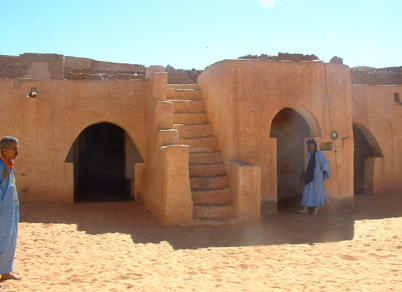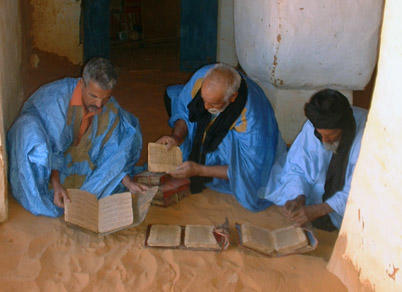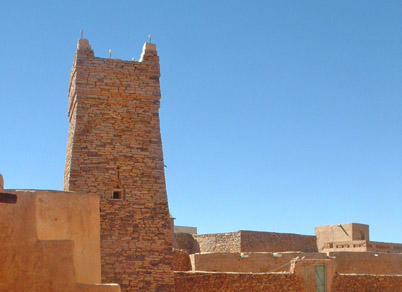2006 and 2008 World Monuments Watch
Surrounded and sometimes nearly engulfed by the shifting dunes of the western Sahara, Chinguetti was established in the thirteenth century and is considered one of Islam's seven holy cities. A World Heritage Site, the town flourished in the Middle Ages, when it was a key stop for caravans carrying gold, salt, dates, and ivory across the Sahara. Chinguetti is also home to an extraordinary collection of important Islamic manuscripts. Its medieval mosque features a prayer room with four aisles, a double-niched mihrab, and a courtyard. It is best known for its massive square minaret that towers over the town. Chinguetti is located in the western Sahara and the encroaching desert is a constant concern. In addition, flash flooding and subsequent erosion also pose a danger to the building. Chinguetti Mosque was cited as an example of cultural heritage threatened by climate change in a report to the 30th session of the UNESCO World Heritage Committee in 2006. The site suffers as a result of the effects of the expanding desert, changing rainfall patterns, vegetation loss, soil erosion, and extreme temperatures.
Since the Watch
Mauritanian President Mohamed Ould Abdel-Aziz’s visit to the Chinguetti Mosque, during the festival of ancient cities in January 2015, drew attention to the visibly poor state of the mosque and the city itself, which continue to be threatened by intense desertification. January 2015



